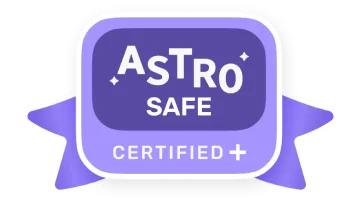Why “calm tech” matters right now
Parents are actively searching for low-stimulation, ad-free apps that put open-ended creativity first. A standout example is Pok Pok, a Montessori-inspired “digital playroom” designed for child-led exploration rather than rewards or levels frequently highlighted by mainstream outlets this year.
What we look for:
Open-ended play (child sets the pace; no timers or streaks)
Gentle audio and uncluttered interfaces
Ad-free or minimal distractions; clear privacy practices
Offline modes for travel or calm time on the go
Ages 2–10, with clear guidance for parents
Homework first, then calm play. If a tough problem stalls the evening, keep it peaceful: 👉 Try AI Homework Helper for step-by-step hints, quick explanations, and gentle guidance kids can follow on their own.
The Best Low-Stimulation, Creative Apps (Ages 2–10)
Each pick includes: what it is, why it’s calm, suggested ages, and quick notes on cost/offline/ads based on current listings. Always re-check the store page before downloading.
1. Pok Pok (2–8)
Montessori-style digital “toys” for quiet discovery; intentionally low-stimulation and ad-free by design; strong parent/press validation in 2025. Notes: subscription/lifetime deals vary; works offline.
2. Khan Academy Kids (2–8)
free, gentle pacing, no third-party ads; read-aloud books, early math/phonics, SEL. Notes: excellent for quiet learning blocks.
3. Montessori Preschool (Edoki) (3–7)
phonics, numbers, and life skills built by Montessori teachers; calm visuals and self-paced progress. Notes: subscription model; check offline packs.
4. Toca Boca World / Toca Boca Jr (4–10)
story-making sandbox, no pressure to “win,” rich pretend play without leaderboards. Notes: no third-party ads; optional IAP content.
5. Sago Mini World (2–5)
gentle, whimsical mini-worlds; COPPA-certified brand; ideal for wind-down time. Notes: subscription; curated, ad-free experience.
6. Endless Alphabet (3–6)
silly, soothing animations that teach vocabulary at a child’s pace; no scores or fail states. Notes: pay-once or bundle options vary by store.
7. Busy Shapes / Busy Shapes & Colors (Edoki) (2–5)
tactile puzzles that feel like real manipulatives; low-stim UI for calm focus. Notes: pay-once; check for offline use.
8. Lake: Coloring (6–10+)
mindful coloring with quality art packs; excellent for quiet, screen-assisted relaxation. Notes: free-to-try + optional packs; offline coloring supported.
9. Procreate (with a guided “Kids” setup) (7–10+)
powerful, pay-once drawing suite on iPad; no social feeds by default; set up a minimal brush set for calm sketching.
10. Osmo Monster / Creative Set (4–9)
hybrid play that brings drawings to life; calmer, hands-on energy that shifts kids from screen to paper and back.
Homework before calm play works best with gentle, step-by-step help. 👉 Try AI Homework Helper
Five-minute setup for calmer screen time
Step | Action | Details |
1 | Silence the noise | Turn off notifications and any app cross-promos on the child profile. |
2 | Choose a “calm folder” | Put only the recommended calm apps into one folder and dock it on the home screen. |
3 | Download for offline | Preload art packs or lessons before trips so play stays calm without Wi-Fi. |
4 | System-level limits | Use device parental controls for app limits, downtime windows, and purchase restrictions. |
5 | One clear rule | “Calm apps first.” Keep other apps behind a parent PIN. |
How to use calm apps in a Montessori-style routine
Principle | What to Do | Example/Tip |
Short, predictable windows | Schedule 10–20 minutes once or twice a day. | Same time daily (e.g., after snack). |
Child leads, adult observes | Offer a simple prompt, then step back. | “What can your town look like today?” |
Bridge to hands-on | Move from screen to real materials with a related task. | “Color a garden in Lake, then build it with blocks.” |
Reflect briefly | Close with one or two questions. | “What did you make? What will you try next?” |
Quick answers for parents (FAQ)
Are these apps ad-free?
Many prioritize ad-free or subscription-supported experiences (e.g., Pok Pok, Sago Mini, Toca Boca). Always confirm on the store page at download time.
Can my child use them offline?
Several provide offline modes or downloadable packs handy for flights and quiet corners. Check each listing to be sure. SFGATE
What ages are best?
Start younger kids (2–5) with Pok Pok, Sago Mini, Busy Shapes; move older kids (6–10) toward Toca Boca, Lake, Procreate with light parent guidance.
Offline prep list (travel & quiet corners)
Task | Action | Done |
Download packs | Grab coloring sets, puzzle levels | ☐ |
Check log-ins | Ensure child profile works offline | ☐ |
Preload tutorials | Save a few how-to clips or cards | ☐ |
Turn off updates | Pause auto-updates during trips | ☐ |
Pack hands-on follow-ups | Sketchbook, crayons, mini blocks | ☐ |
Short hints prevent frustration spikes before calm tech time. 👉 Open AI Homework Helper
Why this is trending (and likely to keep growing)
Mainstream coverage keeps spotlighting low-stimulation, Montessori-inspired tools like Pok Pok calm, ad-free, and built for exploration instead of rewards. That demand aligns with what parents search for: calm apps for kids, Montessori apps, ad-free kids apps, offline kids apps, best creative apps for kids.


